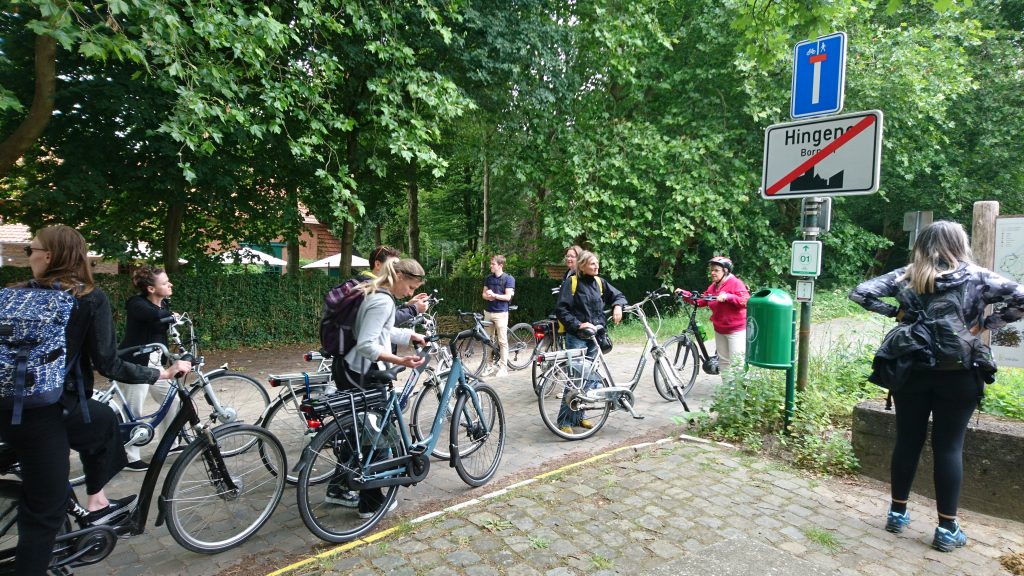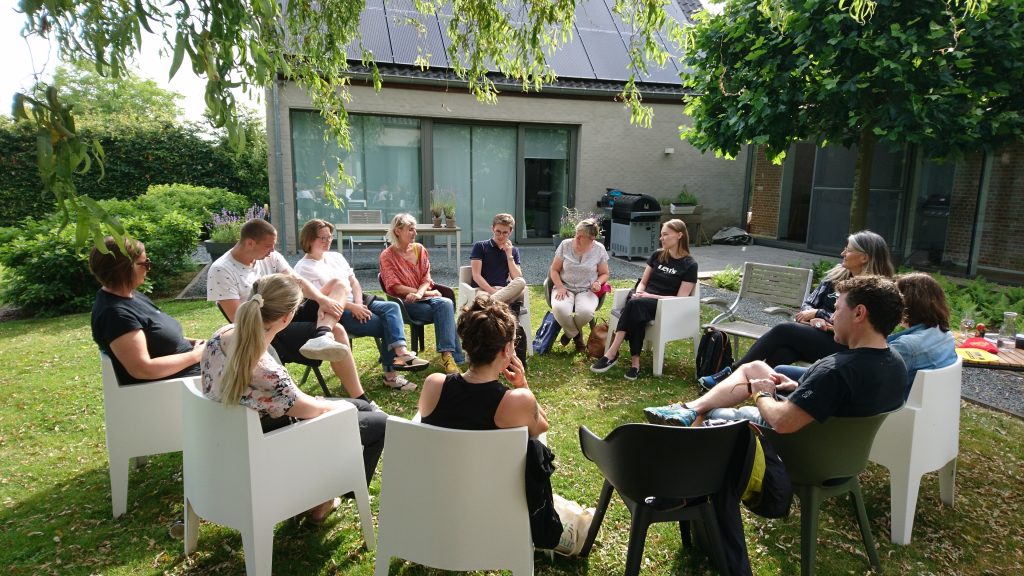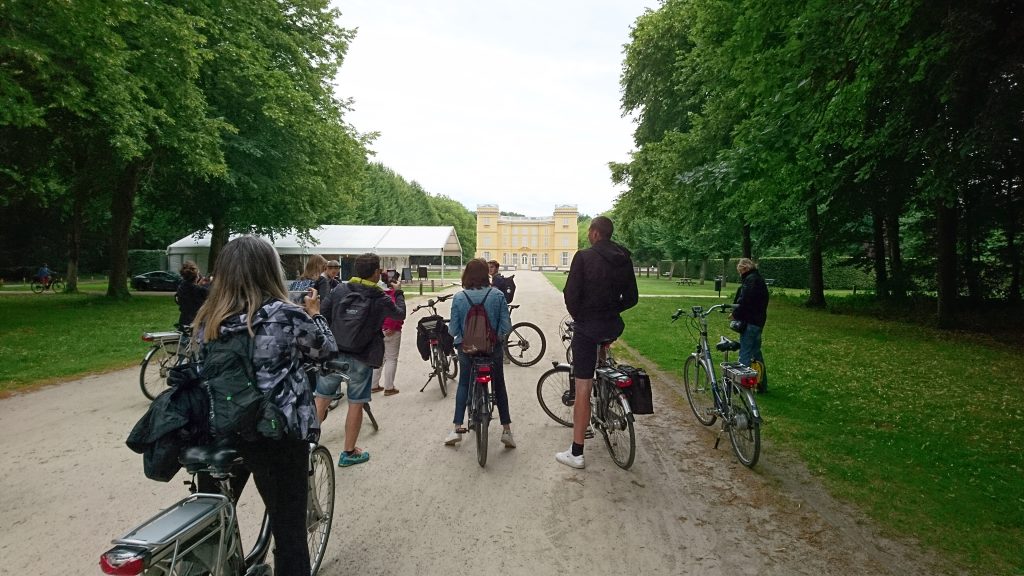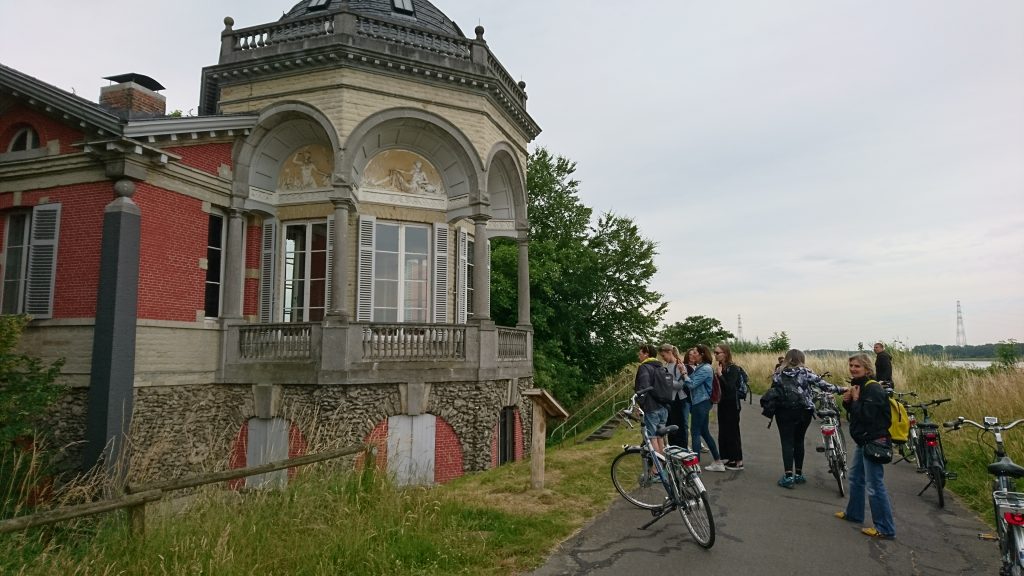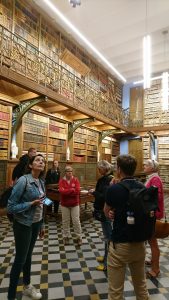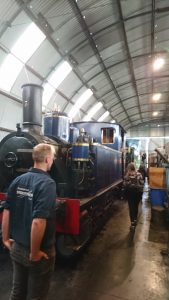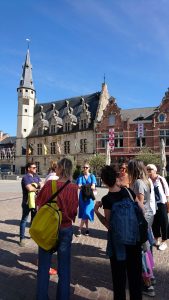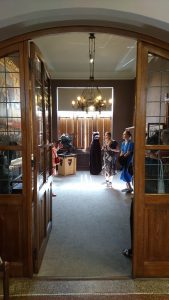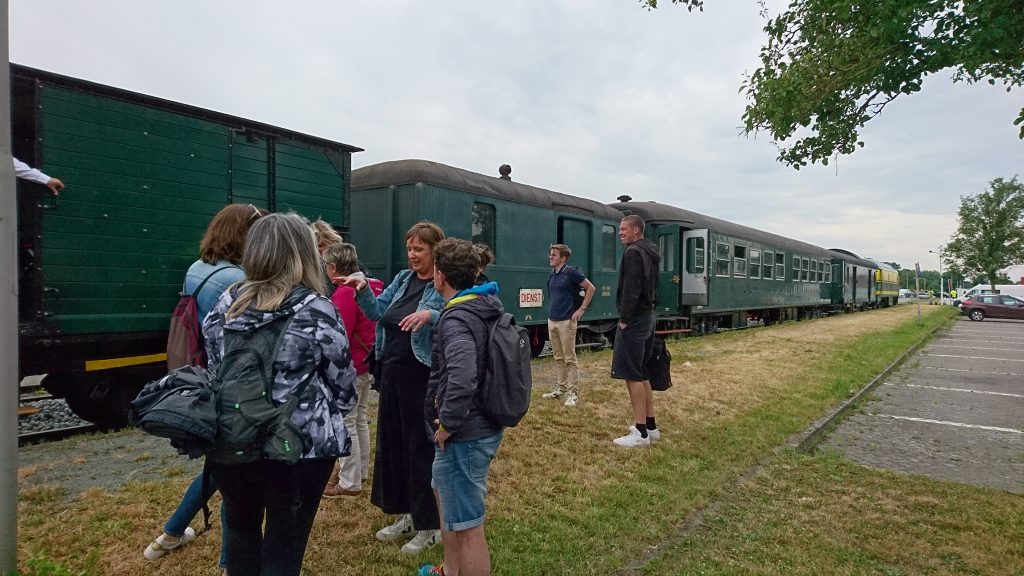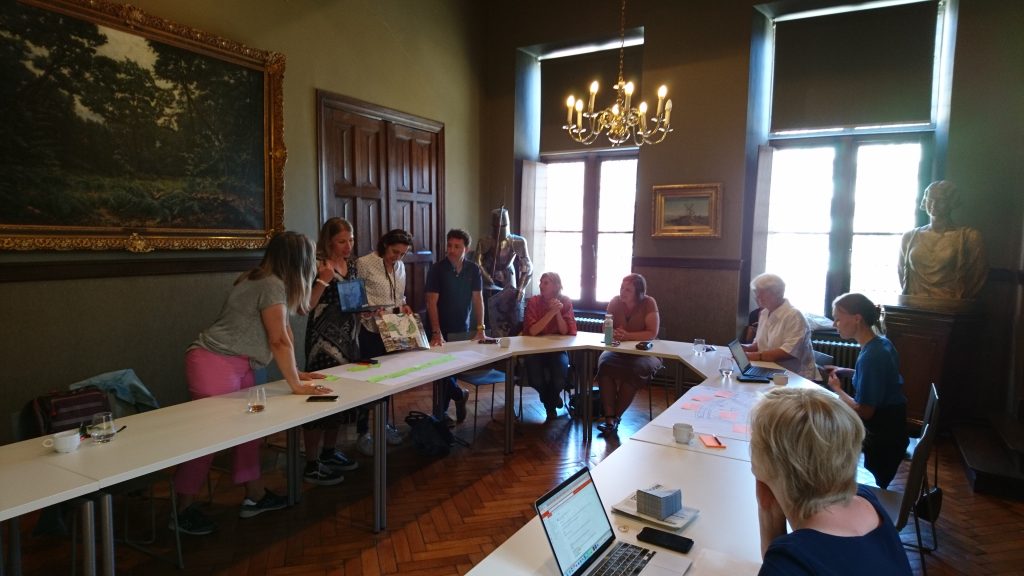From 20 to 22 June, the Scheldeland Living Lab received representatives of the living labs of Huesca and Utsjoki as part of the SmartCulTour project. These exchange visits form part of the SmartCulTour goals of knowledge dissemination, cross-border collaboration and the sharing of best practices in sustainable cultural tourism development.
Together with local stakeholders of Scheldeland, Griet Geudens of Visit Flanders and Vanessa Ágata de Abreu Santos and Bart Neuts of KU Leuven welcomed the visitors and guided them around the three partner municipalities of Bornem, Puurs-Sint-Amands and Dendermonde, focusing on particular cultural heritage venues, key natural resources and slow transportation modes that serve as a connector of potential network nodes. The living lab managers and other delegates got to visit these sites and carried out brainstorming sessions to look at opportunities, potential and possible thresholds.
After a challenging arrival due to a security personnel strike at Brussels Airport and subsequent rerouting of flights, on Tuesday 21 June a full day was scheduled. After an introduction to the Scheldeland Living Lab and an ice breaker exercise between the participants, an electric bicycle tour took the visitors via multiple points of interest in Puurs-Sint-Amands and Bornem. Via the bicycle tour, the delegates were introduced to the extensive cycling node network in Flanders. First stop was the Fortress of Liezele, a fortification built in 1908 and now housing multiple recreational and tourist attractions in and around the fortress such as a B&B, an escape room, a museum, an ice skating pond (in winter), a barefeet walking path and various walking routes. Next, the group cycled to castle D’Ursel, built in 1761 and now serving primarily as an event location, and its castle park and further via the Scheldt dykes to the Notelaer, a beautiful pavilion in neoclassical style with a magnificent view on the river Scheldt and also originally belonging to the duke of D’Ursel. In summertime, temporary accommodation is offered at the pavilion in the form of five tree-hung tents.
From there, visitors made their way to the castle of Marnix de Sainte-Alegonde. While the location had been home to fortifications and castle-structures since the 10th to 11th century, the current castle is a romanticized rendition from the end of the 19th century. Closeby, the abbey of Bornem has been renovated and redeveloped to house a museum collection and offer both residential accommodation as event areas, with the immaculate library being a particular highlight of the tour.
After lunch, the group cycled to the village centre of Sint-Amands, on the Scheldt bank. Here they were introduced to the development plans of the village, and its central focus on both the tidal nature of the river and the artistic heritage of Sint-Amands, visible by both its link to historic writers and by some creative architecture in the village centre. From there, the bicycles were loaded onto a wagon of the steam train Puurs-Dendermonde and representatives got to ride on the renovated carriages and visit the steam locomotives and other carriages that are being restored and operated fully by volunteers. Participants were given an introduction to the organization and its working and participated in an exercise to map the sensory experiences of the trip.
On Wednesday 22 June, the representatives visited the city of Dendermonde where they received a guided tour and introduction to the legend of the horse of Bayard which is central to a procession being held every ten years, as well as some notable heritage sites such as the meat halls, the cloth halls (nowadays the city hall of Dendermonde), the justice palace and the beguinage, and the Dendermondse painting school. Afterwards Vanessa Ágata de Abreu Santos ran a workshop inviting the participants to conduct an emotions mapping exercise as part of a cultural mapping methodology.


